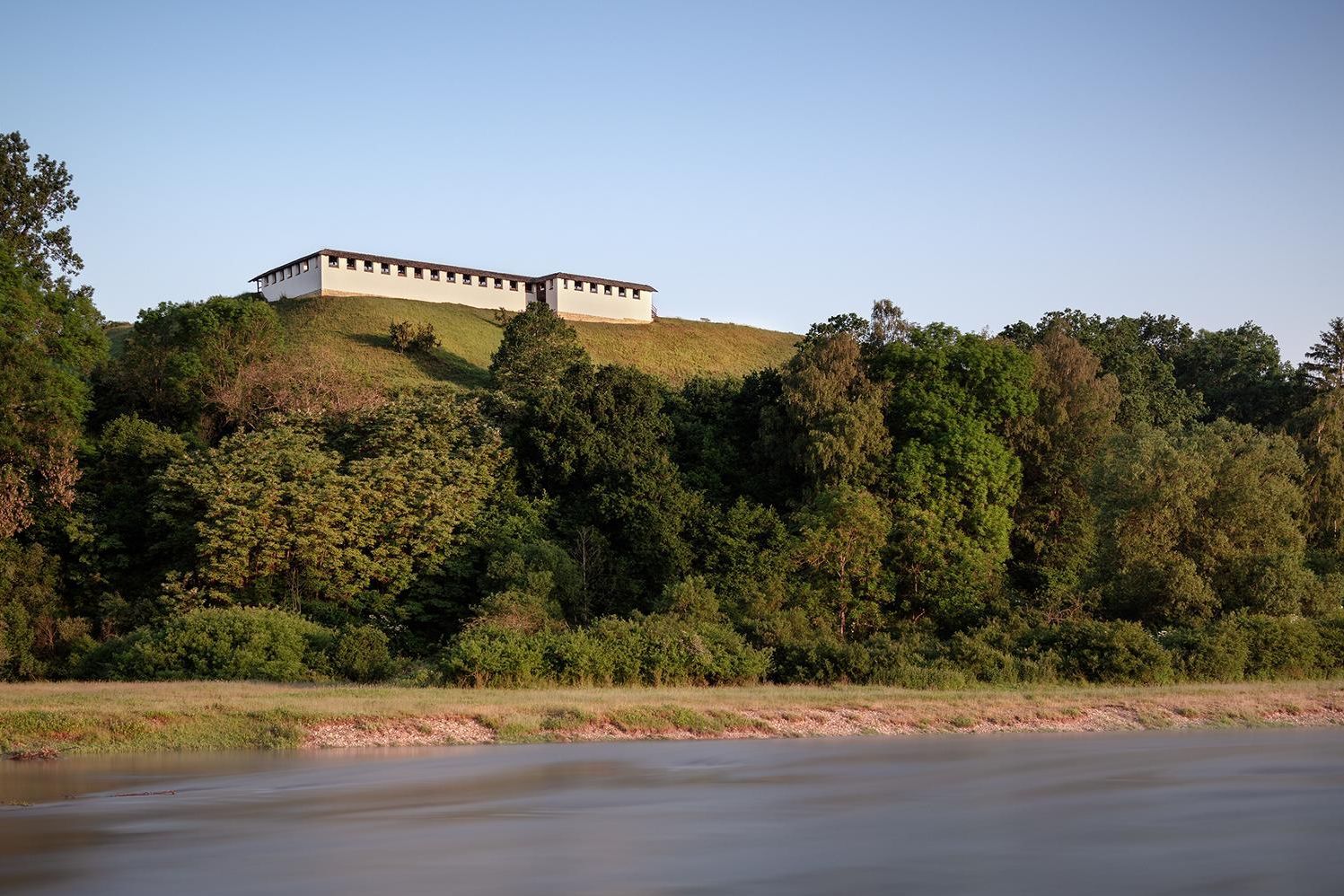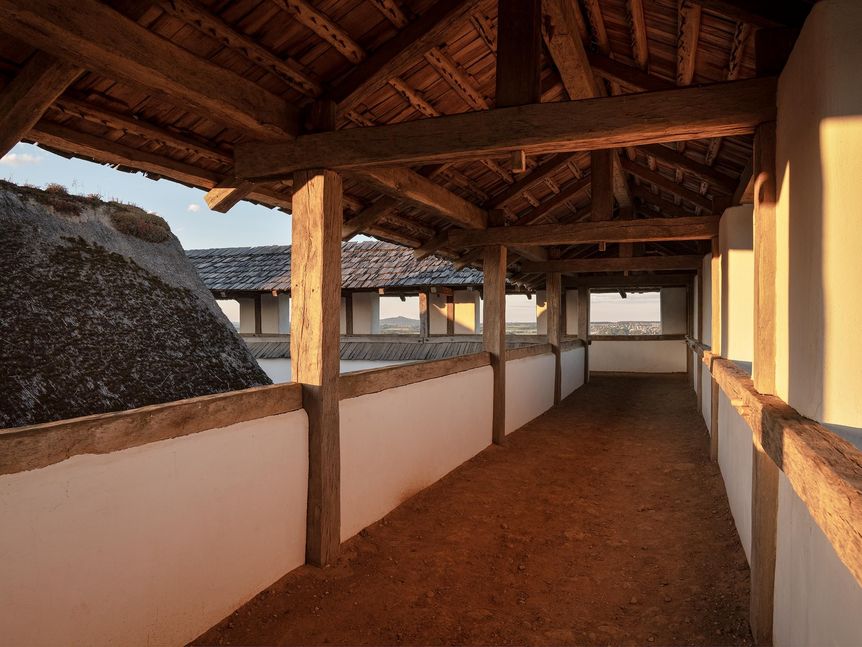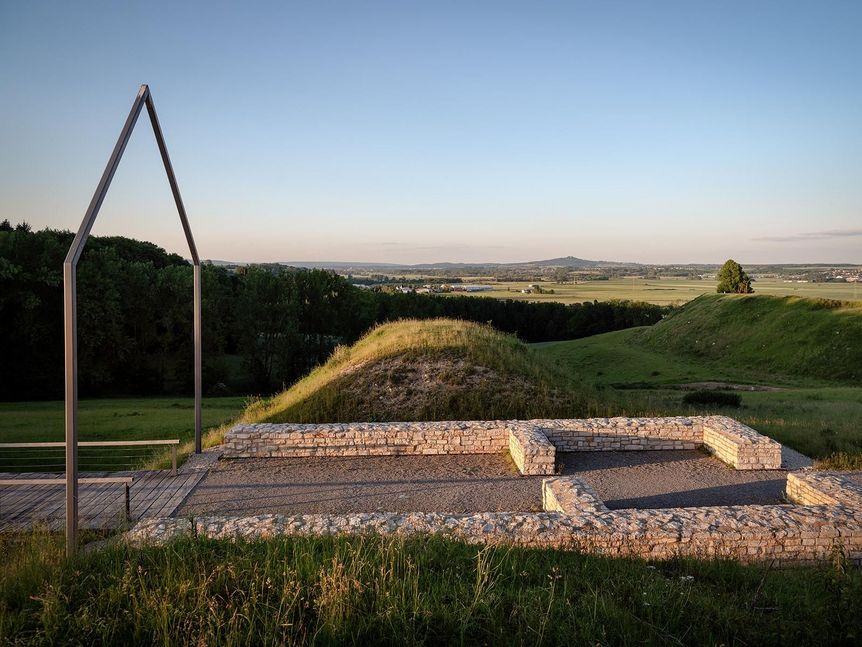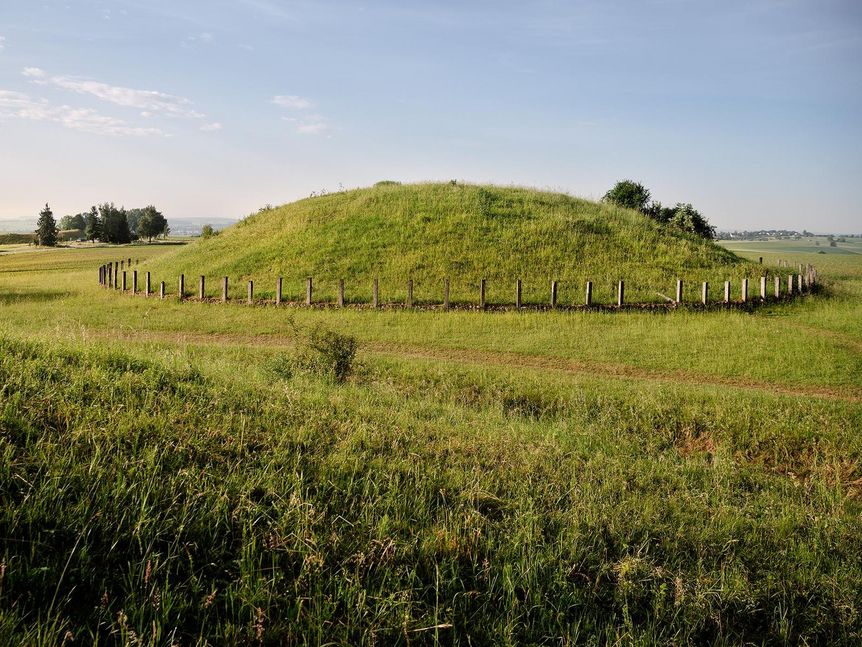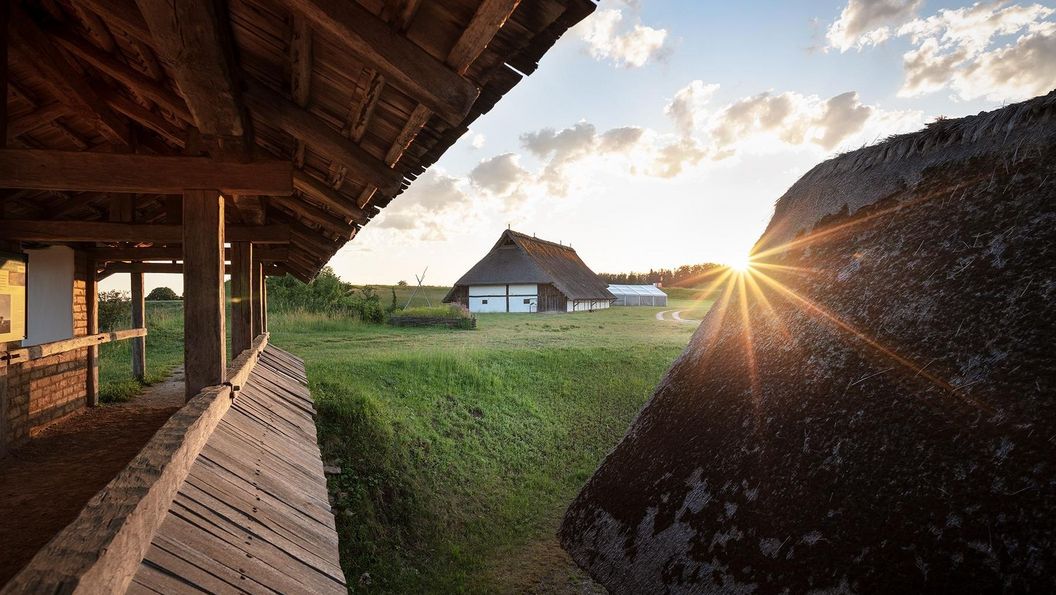A Monumental Center of Trade
The bright white reconstructed mud brick wall is visible from afar and gives a sense of the impression the settlement must have made on guests of the time. Thanks to its location, the city was a trade hub and thus became an important center of settlement, economy, and power with far-reaching contact to the rest of the world, including southern Italy and modern-day Marseille, from which wine was imported. Together with the archaeologically documented outer settlement, approximately 5,000 inhabitants lived here – an astounding number for that time. The population may have farmed chickens. In any case, the earliest bones of this Asian fowl found north of the Alps originate from this settlement.



